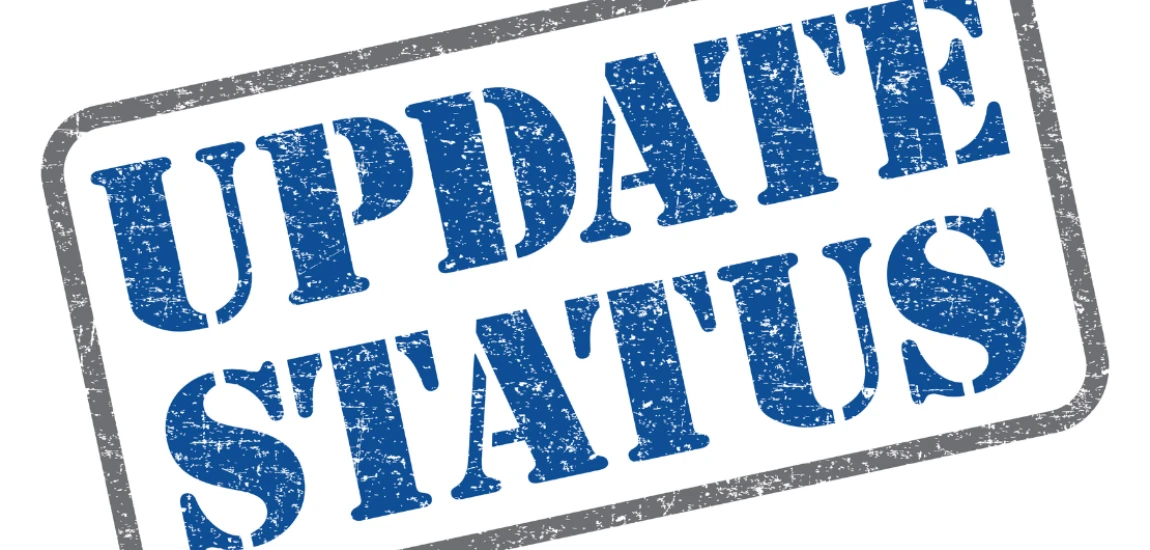Status Update Addiction: The Neurochemistry of Being Seen

In an age where likes, shares, and comments often stand in for real connection, our relationship with visibility has become increasingly chemical. The simple act of posting a status update—something that once felt spontaneous—has evolved into a microdose of dopamine, feeding our need for recognition and belonging. This isn’t just vanity. It’s neurobiology. Every “seen by” notification triggers a cascade of brain activity linked to pleasure, motivation, and social survival.
But at what cost? This blog explores the neurochemistry behind status update addiction—why we crave attention online, how algorithms exploit our biology, and what we can do to reclaim control.
The Dopamine Loop: Why Posting Feels So Good

The Brain’s Reward System
When you post something online and receive positive feedback, your brain releases dopamine—a neurotransmitter tied to pleasure and reward. It’s the same chemical involved in experiences like eating chocolate, falling in love, or gambling. The unpredictable nature of social media engagement—sometimes you get 2 likes, sometimes 200—creates what psychologists call a variable reward schedule, which is one of the most powerful forms of reinforcement known to science.
Social Validation as Digital Currency
Social approval is no longer just emotional—it’s measurable. Every like, view, or heart functions as a tangible unit of validation. Over time, this turns self-expression into a numbers game, where the intrinsic joy of sharing is replaced by extrinsic motivation for recognition. Users become conditioned to seek more engagement, not connection.
The Cycle of Anticipation and Reward
What makes status update addiction particularly sticky is anticipation. Even before posting, the brain starts releasing dopamine in expectation of social reward. The moment you hit “post,” your mind is already scanning for reactions. This keeps you in a constant cycle of posting, checking, refreshing, and repeating—an invisible loop engineered to keep you online.
The Need to Be Seen: How Visibility Became Survival

From Tribal Belonging to Digital Attention
Historically, humans depended on social belonging for survival. Being part of a group meant protection and resources. That ancient wiring hasn’t changed—only the environment has. In digital spaces, visibility signals relevance, and invisibility feels like social death. This explains why not getting likes or comments can feel disproportionately painful—it activates the same neural regions associated with physical pain.
The Algorithmic Amplifier
Modern platforms don’t just host your updates—they manipulate who sees them. Algorithms reward engagement with more exposure, conditioning users to post what performs well rather than what feels authentic. This reinforces a feedback loop where visibility becomes synonymous with self-worth.
When Performance Replaces Presence
Social media visibility often requires self-curation. People share polished, filtered versions of their lives, not raw moments. Over time, this leads to a performative existence where authenticity is sacrificed for attention. The paradox? The more we try to be seen, the less we feel genuinely known.
The Chemistry of Clout: How Platforms Hack the Mind

Micro-Interactions, Macro Effects
Every small interaction—heart, comment, or mention—creates a tiny neurological reaction. These microbursts of dopamine are intentionally spaced to keep you scrolling. The uncertainty of when feedback arrives mirrors the reward pattern of slot machines, making social platforms psychologically addictive.
The Role of Cortisol and Anxiety
The addiction isn’t purely pleasurable. When engagement drops or notifications slow, cortisol—the stress hormone—rises. This creates anxiety and a compulsion to check notifications more frequently. The result is a seesaw of pleasure and panic, keeping users emotionally tethered to their feeds.
The Illusion of Control
Social media platforms are designed to make users feel in control—choosing when to post, what to share, or whom to follow. But behind the screen, algorithms shape visibility, timing, and reach, subtly guiding behavior. What feels like freedom is, in many ways, a controlled experiment in digital conditioning.
When Self-Worth Becomes Quantified

The Metrics of Identity
Once online engagement becomes a metric of worth, it reshapes self-perception. People begin to equate personal value with digital response. A popular post validates identity; a quiet one can trigger self-doubt. Over time, this creates what psychologists call conditional self-esteem—confidence tied to external approval.
The Fear of Digital Obscurity
Status update addiction thrives on the fear of being forgotten. In a fast-moving digital landscape, attention is fleeting. This fuels compulsive posting—users share more frequently to stay visible, relevant, and “in the feed.” For many, the idea of being unseen online feels like erasure.
Comparisons, Competition, and Constant Pressure
The social web turns visibility into a competition. When your peers’ updates outperform yours, it sparks upward comparison, a cognitive bias that diminishes self-worth. Even success can feel hollow, because there’s always someone with more followers, likes, or reach.
The Neuro-Marketing of Attention: How Big Tech Profits from Your Brain

Designing for Addiction
Social media companies rely on the same psychological principles used in gambling and behavioral economics. Features like infinite scroll, red notification dots, and push alerts are not aesthetic choices—they’re behavioral triggers. Each is designed to exploit the brain’s dopamine circuits and extend “time on platform.”
Attention as a Commodity
Your attention is the product being sold. Every second you spend engaging generates data—what you like, how long you linger, what content hooks you. This data fuels advertising models worth billions. In essence, platforms profit from your neural responses, transforming dopamine into revenue.
Ethical and Psychological Fallout
This manipulation raises moral questions. Can a user truly consent to an experience designed to bypass rational control? The more platforms gamify validation, the more they blur the line between user and subject, participation and exploitation. The longer-term effects—reduced focus, increased anxiety, and distorted self-image—are becoming impossible to ignore.
Breaking the Cycle: Reclaiming Your Attention and Authenticity

Digital Detox or Digital Discipline
While taking breaks from social media can help, the deeper solution lies in changing your habits—not just deleting apps. Schedule intentional offline time, turn off non-essential notifications, and use social platforms as tools, not extensions of identity. The goal isn’t abstinence—it’s awareness.
Redefine Visibility
Reframe what it means to “be seen.” Focus on depth, not reach. Sharing meaningful updates with a smaller, more engaged audience fosters genuine connection. Choose authenticity over aesthetics and presence over performance. When your visibility reflects who you are—not who the algorithm rewards—you regain agency.
Build a New Reward System
Replace digital dopamine with real-world reinforcements. Exercise, creative expression, and face-to-face conversations all trigger dopamine in sustainable ways. Train your brain to seek satisfaction beyond screens. The pleasure of being seen can transform into the peace of being self-aware.



